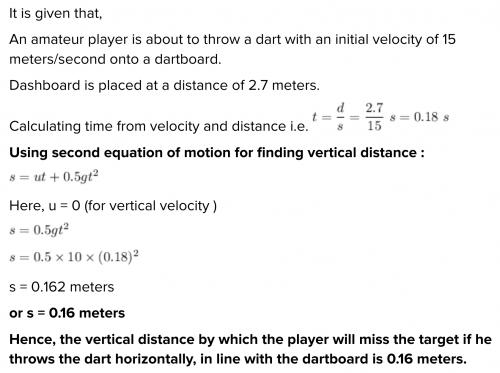 5
5 A geologist is studying the shore along a river. She finds a pile of rocks at the base of a river bank. These broken rock pieces are the result of WEATHERING. A little farther along the river, the geologist find some smaller Pebbles and a very shallow, slow-moving section of the river. These rocks were moved to this location through the process of EROSION. The process of the Rocks actually being placed here it's called DEPOSITION
 83
83 1st word: Weathering: the breaking down of material, usually rock, and making it sediment
2nd word : Erosion-the movement of that sediment
3rd word: Deposition- when that sediment gets dropped of somewhere and settles
Five stars, thanks, and branliest!
 5
5 A geologist is studying the shore along a river. She finds a pile of rocks at the base of a river bank. These broken rock pieces are the result of WEATHERING. A little farther along the river, the geologist find some smaller Pebbles and a very shallow, slow-moving section of the river. These rocks were moved to this location through the process of EROSION. The process of the Rocks actually being placed here it's called DEPOSITION
Question statements:
1. A geologist is studying the shore along a river. She finds a pile of rocks at the base of a riverbank. These broken rock
pieces are the result of
2. A little farther along the river, the geologist finds some smaller pebbles in a very shallow, slow-moving section of the river. These rocks were moved to this location through the process of
3. The process of the rocks actually being placed here is called
Answers:
1st word: Weathering: the breaking down of material, usually rock, and making it sediment
2nd word : Erosion - the movement of that sediment
3rd word: Deposition - when that sediment gets dropped of somewhere and settles
Explanation:
Weathering is the deterioration of rocks, soils and minerals as well as wood and artificial materials through contact with water, atmospheric gases, and biological organisms. Weathering occurs in situ (on site, with little or no movement), and should not be confused with erosion, which involves the transport of rocks and minerals by agents such as water, ice, snow, wind, waves and gravity.
Erosion is the action of surface processes (such as water flow or wind) that removes soil, rock, or dissolved material from one location on the Earth's crust, and then transports it to another location. Erosion is distinct from weathering which involves no movement.
A deposition in the law of the United States, or examination for discovery in the law of Canada, involves the taking of sworn, out-of-court oral testimony of a witness that may be reduced to a written transcript for later use in court or for discovery purposes.
 83
83 1st word: Weathering: the breaking down of material, usually rock, and making it sediment
2nd word : Erosion-the movement of that sediment
3rd word: Deposition- when that sediment gets dropped of somewhere and settles
Five stars, thanks, and branliest!

Independent variable: the best method to get rid of them.
Dependent variable: washing with soap and water.
Hypothesis: Organic oils
Control group: water
Answer:
see below.Step-by-step explanation:
To solve this problem, we can use the conservation of energy and conservation of momentum principles.
Conservation of energy:
The total initial energy is the rest energy of the proton and neutron, which is given by:
Ei = (mp + mn)c^2
where mp and mn are the masses of the proton and neutron, respectively, and c is the speed of light.
The total final energy is the rest energy of the deuteron plus the energy of the gamma ray, which is given by:
Ef = (md)c^2 + Eg
where md is the mass of the deuteron and Eg is the energy of the gamma ray.
According to the conservation of energy principle, the initial energy and final energy must be equal, so we have:
Ei = Ef
(mp + mn)c^2 = (md)c^2 + Eg
Conservation of momentum:
The total initial momentum is zero because the proton and neutron are at rest. The total final momentum is the momentum of the deuteron and the momentum of the gamma ray. Since the gamma ray is massless, its momentum is given by:
pg = Eg/c
where pg is the momentum of the gamma ray.
According to the conservation of momentum principle, the total final momentum must be equal to zero, so we have:
0 = pd + pg
where pd is the momentum of the deuteron.
Solving for md and pd:
From the conservation of energy equation, we can solve for md:
md = (mp + mn - Eg/c^2)/c^2
Substituting this expression into the conservation of momentum equation, we get:
pd = -pg = -Eg/c
Substituting the given values, we have:
mp = 1.6726 × 10^-27 kg mn = 1.6749 × 10^-27 kg Eg = 2.2 × 10^6 eV = 3.52 × 10^-13 J
Using c = 2.998 × 10^8 m/s, we get:
md = (1.6726 × 10^-27 kg + 1.6749 × 10^-27 kg - 3.52 × 10^-13 J/(2.998 × 10^8 m/s)^2)/(2.998 × 10^8 m/s)^2 = 3.3435 × 10^-27 kg
pd = -Eg/c = -(3.52 × 10^-13 J)/(2.998 × 10^8 m/s) = -1.1723 × 10^-21 kg·m/s
Therefore, the mass of the deuteron is 3.3435 × 10^-27 kg, and its momentum is -1.1723 × 10^-21 kg·m/s.
 1
1 
It will provide an instant answer!
